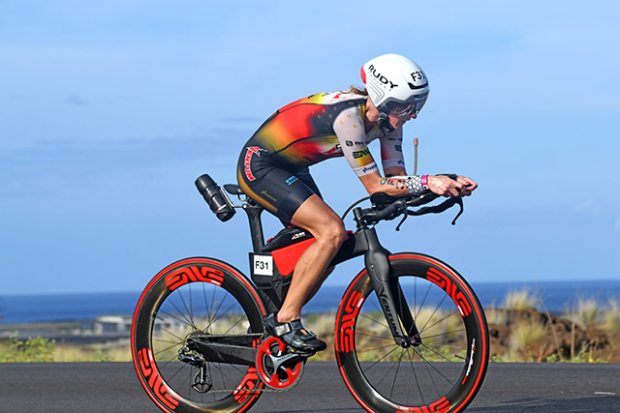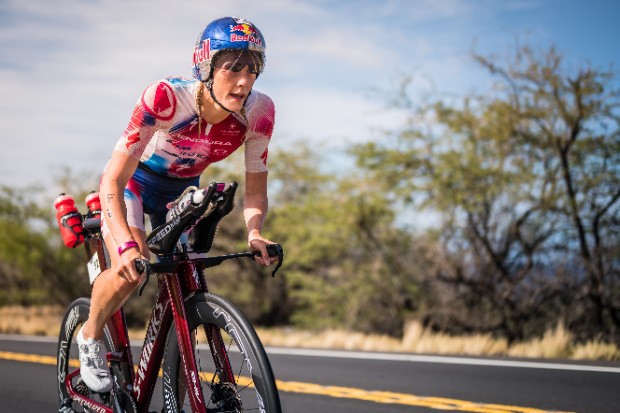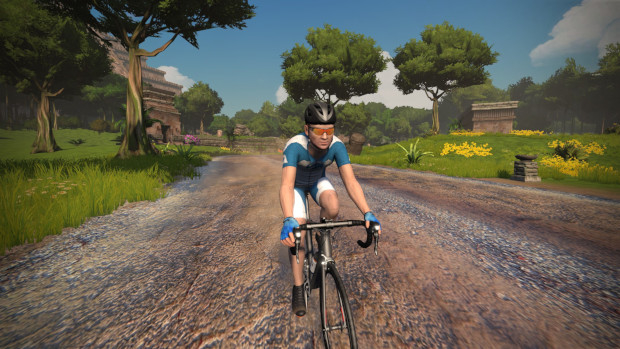Ladies of Zwift: the Unique Experiences of Women’s Cycling in a Virtual World
I’m admittedly sensitive when it comes to being a woman and a cyclist out on the road. Honks and stares are commonplace, as is being chased down by dudes (always dudes) while in the middle of a workout. I dread passing men during intervals, knowing I’ll hear their freehub buzzing behind me shortly. Then I’ll have to wave them around while I rest, or make small talk over the din of my playlist, or explain that I’m in the middle of something and don’t have time to explain what I’m in the middle of and how I prefer to ride alone. Thank you very much and have a nice day, sir.
I think being chased by other riders is a phenomenon every cyclist of every gender has to deal with: roadies seem to be equal-opportunity drafters, incapable of letting gaps open in their imaginary peloton. However, my hackles go up specifically as a woman who has experienced plenty of street harassment and worse.
There was the guy who completely changed his route to tag along with my partner, Dusty, and me on our quest for a Strava segment in favorable conditions. This old(er) man on his old(er) bike hopped right on Dusty’s wheel, separating us, and causing me to fall back out of his draft and our planned rotation. He could have realized he was the unknown factor in our pre-existing dynamic, and recognized that we had no understanding of each other’s handling skills before inserting himself. But no, our plans were ruined.
Another guy ditched his friend in order to grab my wheel for a solid mile, and then followed me into a parking lot where I tried to shake him, screaming “COME ON LET’S GO KEEP GOING GO!!!” in my face. Did it not occur to him that chasing a woman off the road and screaming at her is not OK, neither in a dark alley, nor on a sunny afternoon bike ride? There is also a man I still see around the neighborhood who called me a cunt, once, for telling him I was doing short intervals and to get off my wheel. No, I did not ask politely. I shouldn’t have had to.
These experiences, and the reactions I’ve gotten while recounting them to men, remind me of the old “boys will be boys” and “if he pulls your pigtails, it means he likes you” bullshit. How flattering that I can even pull a guy around. I should take the screamed compliments. I should be polite and make friends while minding my own Watts. Just enjoy it.
Imagine my joy when I found Zwift, and could not only explore a virtual, ever-expanding world, but also complete my workout without having to take into consideration stoplights, bike lanes, gradients, or another impediment to my workouts: men. Zwift was a solitary bubble where I was unbothered by passing and re-passing the same personality-void pixels. Better yet, my little unrealistic and inconspicuous avatar, with slim non-swimmer arms, undefined calves, ratty ponytail, and same-as-every-other-female-avatar’s breasts wouldn’t pique any male avatar’s attention. My avatar even wears the same kit as many male avatars, so we’re like teammates, our mutual respect left unspoken, or maybe just imagined. That’s how I operated on Zwift for a long time, anyways.
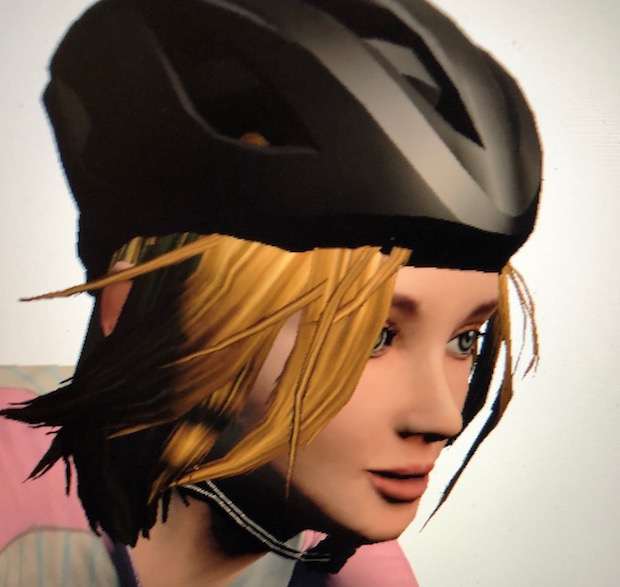
My avatar, circa February. I do not look like this, nor do I know anyone who wears their hair this way while cycling.
The Social Value of Zwift
The social aspect of Zwift has really come alive for me recently, though. My awakening to the full functionality of the game happens to coincide with COVID-19 and our new social isolation, but I know others had been taking advantage of everything from group rides to the Zwift Academy long before I was aware of them. It seems to me that the socializing via Zwift is almost as valuable as training on it these days, and maybe especially for women.
Whereas Americans are still dealing with physical distancing, mandatory mask ordinances and closed coffee shops, Zwift provides a fantastic outlet for tri and cycling clubs missing their group workouts. Patti Flynn (Level 15) had just hit her stride, training with a group twice a week in the Computrainer studio at Edge Athlete Lounge through Chicago’s winter, when COVID-19 shut down the facility. Her “Girl Gang” had spent early mornings sweating it out, and anyone who has participated in team sports knows how intimately bonded you become to people when your heart rates rise together before the sun does. After the shutdown, Ms. Flynn and her Gang missed each other so much that they hooked up a network of Zwift, Zoom, FaceTime, and other connectors so they could continue to ride “with” each other through Chicago’s early spring and quarantine.
Likewise, my in real life (IRL) epidemiologist friend, Stephanie Melkonian Linkus (Level 9) recently joined Zwift “as a COVID alternative to group rides” for Trail Dog Tri, the triathlon club she founded in Albuquerque, New Mexico. She had previously been set up on TrainerRoad, and actively resisted joining Zwift, but the social outlet Zwift provides became inescapable for her and her clubmates. Dr. Melkonian is able to kill multiple birds with one stone: through Zwift, she can maintain semi-normal operations of her club, get her own workout in, socially connect with other people –teammates, athletes, and other women— enjoy some maskless exercise (since New Mexico instituted a mask mandate while outdoors), and hopefully relieve some occupational stress during this extremely demanding time.
What’s especially great about riding on Zwift is that, IRL, I might see one other serious woman cyclist on a three-hour ride out my front door. However, there are oodles of women on Zwift at any given moment. The mere sight of a female avatar makes me happy: somewhat ironically, while I expected us to be indistinguishable and unremarkable pixels, women on Zwift do catch my eye, and I have actually managed to simultaneously make friends with a simple Ride On, or by complimenting a creative kit/sock combo, all while minding my own watts. Through in-app messages, one woman –who was in the middle of racking up 100 miles on Watopia’s Tick Tock route—told me about a virtual challenge series her favorite race director had organized. Another woman and I bonded over our hometowns, and invited me to visit next time I am in her area IRL. We still send Ride Ons when we see each other in-game.
My local bike shop hosts (or hosted, pre-COVID-19) one women’s ride a week, I think, as far as I know—I could confirm this but that seems almost as hard as mustering up the energy to show up on time for said ride. However, there are multiple women’s-only events held every day on Zwift — including this site’s own Ride of the Valkyries on Tuesday mornings. My friend Kate Baldwin (Level 12), who lives 9,336 miles and tomorrow plus 15 hours away, in Perth, Western Australia, talked me into doing a few races with her—something I’m not brave enough to do IRL. After a few co-ed crits where we finished mid-pack and had very “meh” experiences, we started preferring women’s-only races. As long as my voice-to-text can interpret me through my TV, fan, and desperate gasps for air, we’re able to use messages to form groups with other women, work together, encourage each other to bridge up to the next group, and compliment each other’s efforts. Often, we bond with one or two new riders, then follow each other on Zwift or Strava afterward.
Co-ed races, by contrast, can be near silent, with no banter at the start or finish, and definitely no coöperation during the race. I’ve often been the only one “chatting,” asking riders near me to maybe group up and help each other out for 45 minutes in the middle of the Ven-Top climb, for instance. What’s especially funny is that my first triathlon was an all-women’s event, and the same attributes: on-course chattiness and seemingly needless segregation of the sexes—turned me off of such “lady power” events. My personality and preferences in Zwift are as unrecognizable as my avatar.
Pro triathlete Amanda Wendorff (Level 50) experienced the same type of awakening to women’s bike racing via Zwift, albeit at a different level than the average woman Zwifter. “Honestly I had no bike racing experience, so it has opened my eyes to a whole different world and really created a desire to get out there and do some bike racing once the world opens up a bit. It's also made me more aware of women's cycling, generally, and I've become more of a fan of the ladies at the top of that sport.” She also described the difference between women’s and co-ed racing better than my “meh:” “The co-ed races, which really means the men's races, with a woman or two mixing it in, tend to start a bit harder. Zwift really seems to favor the higher power, heavier riders, and I'm just barely hanging on. When I ride in the men's races, I'm just redlining it the whole time, attempting to stick with the pack as long as I can. The women's races have more depth, and while they also start fast, they'll usually settle down a bit, and then the fun becomes anticipating, seeing, and responding to attacks.”
Ms. Wendorff and her ‘A’-level W/kg dove further into the opportunities Zwift provided, discovering the highly competitive World Tactical Racing Leagues’ (WTRL) Team Time Trial Series. “I quickly reached out to a couple of my QT2 teammates, Angela Naeth and Lenny Ramsey, who were similarly loving the Zwift racing opportunities, and we created Team SISU. We set about recruiting friends and colleagues from the racing circuit, and ended up with a fantastic team of mostly pro triathletes (myself, Angela, Lenny, Meredith Kessler, Carly Johann, Tamara Jewett), one super star amateur (Lucy Brash), and more recently, one of Zwift's best pure cyclists in Pamela Levine.” QT2 coach Tim Snow “has been serving as our directeur sportif, which is enormously helpful.” For anyone who has been tuning in to the race series on Thursdays, you know Team SISU as the perennial runner-up. Ms. Wendorff says the team has its “sights set on eventually providing a legit challenge to the mighty Socks4Watts team, an all-star team of cyclists and triathletes that has been dominating the women's league.”
For her part, Carly Johann (Level 19), had a Zwift account for a few years, but didn’t really engage with it until COVID hit. A few months after the birth of her second child, just about when she was ready to get back outside for training rides and runs, COVID hit. “All of a sudden, I had no race season and was a stay at home mom with two kids who were here all the time. Enter Zwift. I started dabbling in some rides without really understanding the potential. But my daughter loved the way it looked and wanted to ride. So we put her training wheels in some sneakers and got her set up to ride next to me. The baby often lays on the floor in front of us and watches too. These ‘family’ rides don’t last long, but they’re better than nothing. Then I started realizing there were segments to get and races to enter. All of a sudden, a race season (albeit a very different one) materialized and I had something to look forward to each week. Then I started realizing there were segments to get and races to enter. All of a sudden, a race season (albeit a very different one) materialized and I had something to look forward to each week. I joined Team SISU and we quickly melded into a pretty solid TTT team. I did some of the Zwift pro Tri crit races and started looking for races every time I logged on. Because of time being tight, I usually have an hour to exercise solo each day, but it’s always at different times during the day. It’s impossible to meet up with friends locally for physically distant rides, but it’s always a bonus to log into Zwift and see someone I know riding. I’ve even made new “friends” who I’ve never met before through racing with Team SISU. That hour of exercise feels so productive when it’s a TTT or solo race.” Ms. Johann, a professional triathlete, has parlayed her quest for post-partum fitness into a 4.6 w/kg and being a top contributor to Team SISU’s success.
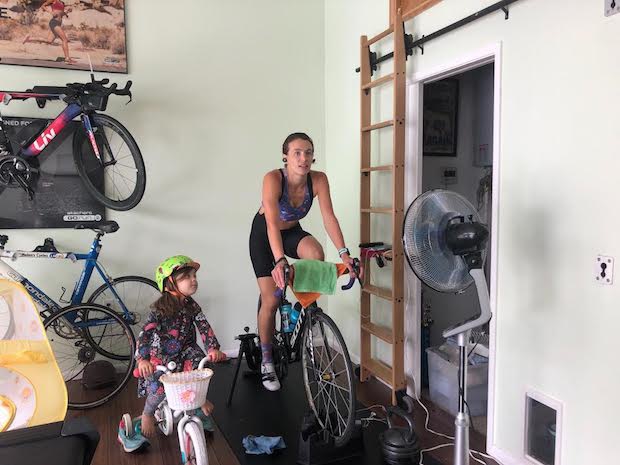
According to the WTRL commentators a few events ago, approximately 3500 riders participate in the TTT series, over 600 teams, with about 600 women across 68 teams participating. I suspect and hope that women’s cycling will experience a Renaissance in a post-pandemic world. And according to a WTRL spectator I chatted with on YouTube, “the women’s races have been more fun to watch.” Get ready, USAC.
Ironman has barely been able to scrape together a field of women to show up to and take 10-deep prize money, but the ZPRO field attracts a stellar field week after week. Pro triathlete and Ironman and 70.3 champion, Jackie Hering, (Level 24), was extended an invitation to the ZPRO Series thanks to the advocacy of Meredith Kessler, and thus has had a shot at continuing to earn prize money through COVID-19. A working mom of two, Jackie has enjoyed the opportunity to race “women from all over the world, with no cost or travel commitment, and we can race from home.” Challenges therein include occupying the kids with snacks or activities with their dad, because “it can be very tough to try to manage small kids while going max bike effort and having to keep an eye on the screen to avoid getting dropped.” She has also gotten to know a number of fellow pros she wouldn’t have during her normal tri-season circuit: “I’m on a message thread with a few ladies in Europe I have not raced much, but we were together in most Zwift events. It definitely hit the racing feel we were looking for!”
The Negatives of Zwift Becoming More Realistic
Unfortunately, despite the many positive aspects and eye opening experiences we’ve had as women on Zwift, as the virtual world has become more realistic and added features, the interactions have likewise become more like those out on the IRL roads. We’ve all seen the comments and off-color sexist jokes being told, openly and publicly, via Zwift messages. I’ve rarely seen anyone ask it to stop. Every woman I’ve spoken with on the topic told me stories of Watopian casual sexism, but each had an IRL equivalent women cyclists are all too familiar with: men “drafting” off them, or yo-yoing with them, without so much as a courtesy Ride On. OK, not everyone knows how or is able to use the Zwift Companion app, but occasionally men reveal themselves by issuing Ride Ons, or chatting with each other, but not with the women amid them.
For example, I was riding in Watopia’s Desert Flats, once, and had just earned the sprint jersey there. While I was feeling pretty proud of myself, donning my new jersey, a fellow within view messaged “Does anyone know what that bull skull kit is from?”
“Well, I do,” I said, while being the only person wearing said bull skull jersey. Is it harder to say “hey K. Langer how did you earn that jersey?” Anyway, I volunteered the pertinent information.
“LOL.”
Then nothing. No “cool” no “thanks for explaining!” and not even a Ride On. Give the Ride Ons, dudes. There’s no bonus for a high ratio of Ride Ons received vs. given.And have a great day, sir.
Patti Flynn of the aforementioned Girl Gang has experienced the same casual sexism. “Ironically, it’s affirming, in a way.” As a trans woman, being the recipient of the same treatment that many other women know is all part of the experience of living, biking, and existing as a female rider on Zwift.
Janine Willis (Level 45), multi-time amateur Ironman 70.3 World Champion, Ironman champ, and Kona podium finisher, told me a number of horror stories. One of her many times logging onto Zwift, she was immediately verbally assaulted, via in-app group messaging, by a man she doesn’t know IRL or virtually. “He was using inappropriate language and making rude statements and was trying really hard to get my attention. Everyone could see [his comments], and he was using my name, so I knew they were directed at me, alone.” No one else commented or stepped in. “I don’t know if there is a way to report harassment to Zwift, there probably is. Sometimes it’s just easier to walk away, modify your session or call it a day.” How is it that we can’t avoid being run off the road and screamed at, even in a virtual environment? There’s no easy block and report button, so Ms. Willis had to log off and wait for the offender to end his ride, sacrificing her own schedule and workout. Zwift now censors language with asterisks (which you can undo in settings) but that’s not helpful when you’re being verbally assaulted.
When one finishes her ride, a summary of achievements pops up, along with a list of people she rode amid for an unknown amount of time. I’ve never mashed the follow button for any random riders –only those with whom I chatted or raced. Yet, Kelly Burns Gallagher (Level 36, you know her) and I, for two, often finish rides to discover multiple follow requests from random dudes (always dudes). I can’t speak to men’s experiences with this, but this has happened IRL via Strava, too. One of my most ardent Kudos-givers is someone who wordlessly rode past me on a local trail, once. Another is someone I’ve “seen” on Zwift, once, and crossed over to Strava. It’s generally harmless, and I’ll take all the thumbs-ups I can get, but consider our hackles in the upright and locked position, wary of the behavior crossing the line into stalking.
Body Type Diversity — or the Lack Thereof
This story started out as one where I would discuss how I, as a woman, felt about Zwift’s hairstyle options as well as the strange ectomorphic body type we’re given as female avatars. Yes, our avatars’ physical appearances is a conversation I’ve had with almost every woman I’ve spoken to for this story. In light of all of our riding experiences, both good and bad, it seems petty to complain about whether or not our avatars visages are realistic, insulting, or aspirational. However, this isn’t about vanity: it’s about whether the programmers at Zwift value the diversity in their ridership enough to depict it.
I look around and see a number of body types for men –from tall and slim to downright bodybuilder buff. Men have calf muscles and triceps. One guy I’ve done meetups with has full-on Terry Crews-esque lats and delts. As triathletes, you all know the various body types –tall, short, slim, muscular, androgynous, vascular, curvy—that we encounter in the sport. Where are they on Zwift?

I invariably think, too, of my friends put “amputee” or “handcycle” or “age 77” in their handles to represent themselves, but have no way of doing so in-app. Nick “Run Nick Run” Roumonada (Level 33), a below-the-knee amputee, multi-time Ironman, CAF ambassador, and medical representative for a prosthetics company, says “it would be amazing if they had hand cycle, push rim chair and an amputee option. It wouldn’t have to be crazy specific –even the [emojis for prosthetics] work.” Mr. Roumonada said he has floated his idea to the powers at Zwift to no known affect. If Zwift can create a concept “Tron” bike, a Big Wheel, dinosaurs and Sasquatch, or top hats for New Year’s rides, why can’t the programmers also whip up some better representation for non-able bodied white males with typical haircuts and colors?
At any rate, I re-affirm that I’m sensitive to gender disparities in experiences, both real and virtual. There are probably a lot of women out there who have not felt the same the highs and lows of Zwifting as those told herein. However, I hope that in hearing a few stories, more men will respond to and respect women while cycling: will consider how, for some, it’s not just a game or a ride, but an escape, a brand new skill set, a chance to socialize and learn, and a form of freedom from barriers that may exist in real life.


